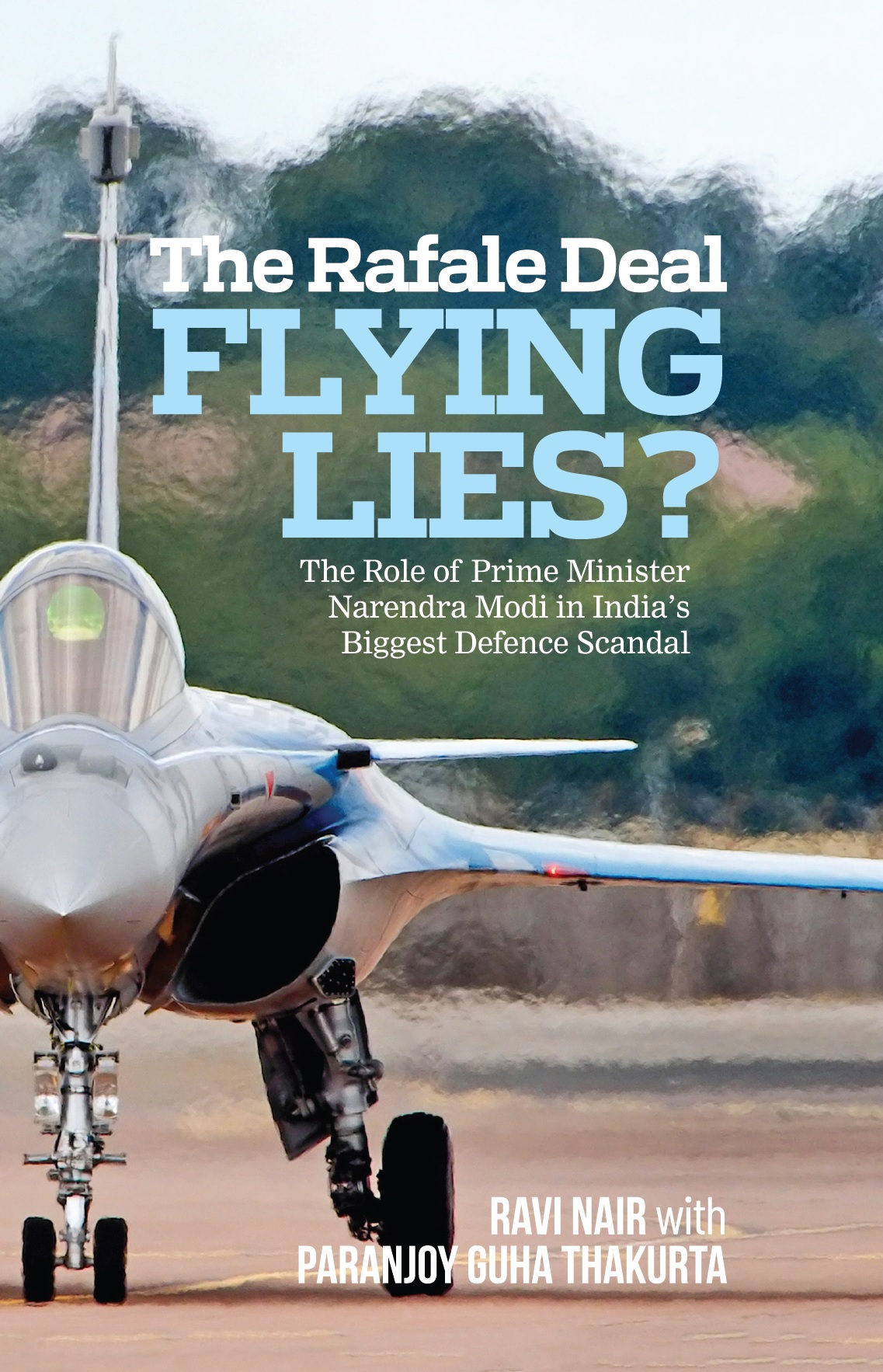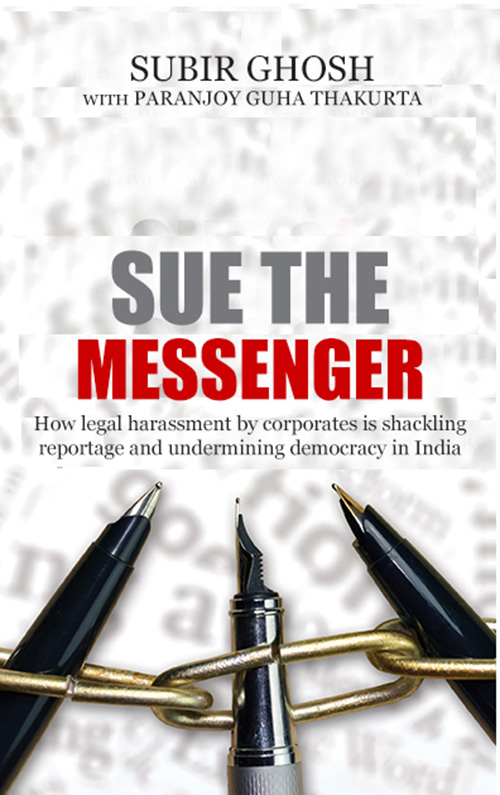“Speak up, it's in your DNA”, was the catchphrase used on July 30, 2005 when the English daily broadsheet Daily News & Analysis(known by its acronym DNA) was launched by Diligent Media Corporation Limited, a 50:50 joint venture between the Essel/Zee group and DB Corp Ltd, the flagship company of the Dainik Bhaskar group, two of India's biggest media conglomerates.
The marriage was supposed to be an ideal one. The Essel/Zee group had financial muscle and diverse national and global business interests, encompassing entertainment and news-based media programming, broadcast and distribution, specialty packaging, real estate, infrastructure and trading.
The Rs 1,800-crore Bhaskar group promoted by the Agarwal family had strong bases in large parts of northern and western India, in Madhya Pradesh, Chhattisgarh, Rajasthan, Punjab, Haryana, Himachal Pradesh and Gujarat. The Dainik Bhaskar multi-edition Hindi daily was then the second largest circulating newspaper in the country, according to figures put out by the National Readership Survey (NRS). It remains one of the most widely circulated and read newspapers in the country and the world.
Much was anticipated from this partnership and the two must have had great expectations of each other. Prasoon Pandey, head of investor relations, D. B. Corp, told Business World in 2014 how “Subhash Chandra, an old family friend, convinced the Agarwals in 2002 to join hands with him to launch an English newspaper”.
But the partnership foundered seven years down the line. What went wrong?
A couple of months prior to the launch of the DNA broadsheet, Indiantelevision.com published an article stating that the “price of DNA, which is being touted as a newspaper that will cater to the 'real needs’of readers, has not yet been decided as the company promoting it is waiting for competition to react on the pricing front before deciding how much subsidization could be done”. Sudhir Agarwal, managing director of the Dainik Bhaskar group, declared: “We want to do in Mumbai what they have done elsewhere”, signaling intense competition for the dominant daily Times of India (ToI). Eventually DNA was launched at half the price of ToI!
Diligent Media had by then put up a state-of-the-art printing press in the Vashi area of Navi Mumbai with a capacity for print runs of 4,50,000 copies. The strategy went beyond a price war. DNA began poaching from other newspapers for personnel, including senior editorial staffers. Both its first editor Gautam Adhikari and its first CEO were old ToI hands. Expectations from the new publication were running high.
In terms of division of responsibilities, it had been originally decided that the Bhaskar group would handle distribution and operations while the Essel/Zee group would be responsible for editorial and marketing. By the time it launched, the readership battle had hotted up with as many as three daily newspapers being launched out of Mumbai in three weeks – the Hindustan Times, the Mumbai Mirrorfrom the Bennett Coleman group, and of course, DNA.
By the third week of August 2005 Kolkata’s Telegraph reported that while DNA and the Hindustan Times were claiming an average Mumbai circulation of 2.90 lakh and 2 lakh copies, respectively, BCCL was claiming daily news stand sales of about 60 ,000 for their newly launched Mumbai Mirror. And a circulation of 6 lakh for ToI, up from the previous year’s ABC figures of 5.2 lakh.
Eventually the pricing strategy helped readership and circulation but hurt the bottom line. DNA showed a spectacular growth in readership of nearly 86 per cent over five years to 8,24,000 in October 2011.It was ranked as sixth among the top ten English dailies in India, making it the second most-read English broadsheet in the city of Mumbai in 2011.
In 2012, it had a good second quarter again, adding 21,000 readers, taking its all India readership to 9.3 lakh. On its website DNA claimed that it was “the second most read English broadsheet daily in the city of Mumbai and is the preferred choice of 15.06 lakh readers in Mumbai alone (based on total readership for Q4 2012 from Indian Readership Survey).” By now there were a clutch of related publications, DNA Money, DNA After Hrs, the Sunday Mag, as well the online version of the newspaper, dnaindia.com and an e-paper edition, epaper.dnaindia.com, that had become operational.
But the readership success came at the cost of a bottom line splashed in red ink.
Like many corporate entities in India and elsewhere, the fortunes of Diligent Media took a hit with the 2008 global financial meltdown. A planned Delhi edition never came. Insiders say that DNA employees had been told more than once over the last four years that a Delhi edition of the newspaper would be launched. Says a former staffer who spoke on condition of anonymity: "We kept hearing about the proposed launch of the Delhi edition and a few journalists were also recruited for this purpose three years ago in 2012. However, the edition was never launched and some reporters who had been recruited were informally asked to leave their jobs."
When the official figures of Diligent Media Corporation Ltd were first made available after it was taken over by Zee Media Corporation Ltd (an Essel Group Company) through its subsidiary Mediavest India Pvt. Ltd, in the consolidated financial statements of Zee Media Corporation Ltd for year 2014-15 that included the Print Business (mainly Diligent Media) segment, the loss was shown as Rs 22.5 crores. (Source: Page 171 of annual report of Zee Media Corporation Ltd 2014-15).
By the end of 2009, the Essel/Zee group-Bhaskar group relationship was showing the first signs of strain when editorial and management control of Diligent Media was taken over by the Essel/Zee group.
"There were soon indications from the top brass in the Zee/Essel group that they were the new bosses," says a former employee on condition of anonymity. "Senior editorial personnel including R Jagannathan were told that criticism of certain influential politicians was a no-no in the paper."
Jagannathan chose to quit as the editorial head of the publication to join the Network18 group (then headed by Raghav Bahl) and Aditya Sinha was brought in from the New Indian Express in Chennai to replace him. (Subsequently there have been two more editors at the helm, taking the number to five in 10 years. The current editor has more than one role. He is designated chief of DNA, editor of DNA as well as of the Marathi news channel of Zee Media.)
By 2010, it appears the Agarwals of the Bhaskar group were telling Subhash Chandra that Diligent Media should either be sold or be taken over by him. This finally happened in early 2012 when D. B. Corp exited the joint venture. While Chandra took over the Mumbai, Pune and Bangalore editions under Diligent Media, the Indore, Jaipur and Ahmedabad editions went to the Agarwals. The Indore edition was subsequently closed.
They quit the joint venture because it did not make financial sense to them. Girish Agarwal admitted as much in his interview with Business World (August 25, 2014) that the decision to exit Diligent Media was based on the realisation that the big urban centres were not meant for the group. “Unlike most media companies, we are driven entirely by revenue and business concerns, not by philosophy and ego”. Elsewhere in this magazine report there is an assertion that DNA was making a loss of Rs 6-8 crore a year. (Not directly attributed to Agarwal)
So what went wrong? Was there a serious error of judgment on the part of the promoters?
Despite the fact that the company was losing money, DNA continued to fight it out, claiming its Mumbai readership to be “double that reported by IRS” soon after the announcement of IRS Q3 2011. The IRS figures for DNA 2011 Q3 were 6.8 lakh and in December 2011, DNAreleased front page advertisements claiming a readership figure of 13 lakh. Gautam Dalal, vice-president, marketing, DNA, explained the logic: six lakh copies were circulated and at the rate of 2.2 readers per copy (an industry standard) making for a readership of 13 lakh. Clearly DNA was pretty desperate to retain its advertising clientele.
And the paper continued to have its cheerleaders. For instance, in May 2013 the website adgully.com stated that “Zee News is one of the leading Hindi news channels with strong viewership across several states … besides a business channel in Hindi .... (and) over the past few years of its (DNA’s) operations the newspaper has expanded its reporters and photographers strength, depth and variety of genre of news content and overall media presence through its increasing clientele. The merger, if it happens, the modalities of which are yet to be worked out, will further assist the Zee’s news business to emerge as a powerhouse in its core areas of operations. It will give the merged entity a higher bargaining power in an industry characterized by fierce competition”. The reference here is to a merger with Zee News. The article was titled, “Likely Zee News + DNA merger a logical step forward.”
Zee News was the listed entity of the Zee group, subsequently, with effect from July 6, 2013 when merged with Diligent Media Corporation, publisher of DNA; Zee News became Zee Media.
Now comes the issue of the strategy of the new owner of Diligent Media, namely, Zee Media Corporation Ltd with regard to their newspaper. The company was incorporated as Zee Sports Ltd on August 27, 1999; changed its name to Zee News Ltd on May 27, 2004; and again to Zee Media Corporation from July 6, 2013.
It was part of the Subhash Chandra-controlled Essel/Zee Group, which had bought out D. B. Corp’s 50 per cent stake in Diligent Media (DNA’s publisher), in May 2012. In December 2013, Zee Entertainment Enterprises Ltd. (ZEEL) merged the media business operations of Diligent Media with itself, a move that provided it with tax benefits. As per the scheme, ZEEL issued one preference share for every four equity shares held by DMCL shareholders, resulting in an issue of 22.3 million redeemable non-convertible preference shares of Rs 1 a share, according to this report. The report added that the transaction would benefit Zee in terms of tax benefits and channel licence.
It quoted analysts saying that Zee Entertainment was getting a bonanza by investing with only Rs 2.23 crore as outlay and benefiting from about Rs 300 crore in terms of income tax benefits and other assets of DMCL. This, according to an analyst with ICICI Securities who was quoted, would lead to improved profit after tax (PAT) margins and higher earnings per share (EPS) for the shareholders of Zee Entertainment.
Meanwhile, Diligent Media’s print business (DNA) was merged with Zee Media. As per the scheme of amalgamation, Zee Media offered one share in the company for every 11 shares held in Diligent Media.
Diligent Media’s FY2012 annual report showed revenues of Rs 154 crore. The media business revenue stood at Rs 35 lakh or a niggardly 0.2 per cent of the company’s total revenues. In FY2013, the media vertical posted a revenue of Rs 5 crore with an EBITDA (earnings before interest, taxes, depreciation and amortization) margin of 40 per cent.
Post merger, questions began to be raised about whether the loss-making Diligent Media was merged with a stock exchange listed company, Zee News, to force the latter's shareholders to share losses. Here is what was written: “Last fiscal, (the) Subhash Chandra promoted Zee News showed a reasonable profit of Rs 5 crore odd in Q1 2013-14. This year’s Q1 2014-15 results have taken the publicly listed news channel to a Rs. 15.6 crore loss. A company statement carefully blames the losses on Essel Publishers, the owner of (the) newspaper DNA”.
But was there a clear strategy in the moves that the corporation was making?
(To be concluded)-
written with Aninda Manna


